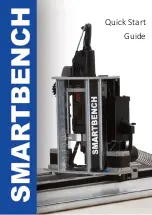
3Com Router 6000 Family
Installation Manual
Chapter 1
Preparing for Installation
3Com Corporation
1-2
Chapter 1 Router Overview
1.1 Introduction
3Com 6000 Routers are next generation high-performance edge routers that 3Com
Corporation solely developed. They provide high forwarding performance and a broad service
range. The Router 6000 supports flexible interface cards (FICs), hot swappable fan modules
and power supply units (PSUs) in 1+1 redundancy.
The following are the major features of the Router 6000.
I. Abundant FIC options
Abundant FICs are available with the Router 6000 allowing great flexibility and investment
protection.
II. Ethernet access
The electrical and fiber (multi-mode and single-mode) FE FICs available with the Router
6000 support PPPoE and PPPoEoA that can offer authentication, authorization, and
accounting (AAA) services for Ethernet access, hence satisfying the requirements of
government offices and enterprises in broadband access.
III. ATM and DSL
Digital subscriber line (DSL) is a simple but highly efficient broadband technology that
achieves great data transmission capacity over existing copper wiring by using the digital
code modulation technology. Installed with an ADSL or G.HSDSL card, the Router 6000
can connect the medium-to-small-sized enterprises to the digital subscriber line access
multiplexer (DSLAM) equipment through a public switched telephone network (PSTN) and
then to the Internet.
Asynchronous transfer mode (ATM) transmits, multiplexes, and switches information in
cells. The Router 6000 can be installed with these ATM cards: 25 Mbps, 155 Mbps, E3,
and T3. The cards support ATM adaption layer type 5 (AAL5) and offer traffic services such
as constant bit rate (CBR), variable bit rate (VBR) and unspecified bit rate (UBR). They are
well-suited to transfer large packets and provide high-speed data services. A
medium-and-small-sized enterprise can use them to connect its network to an ATM
network.
IV. MPLS
Multiprotocol label switching (MPLS), a combination of IP and ATM technologies, replaces
the IP header with a short and length-fixed label as traffic identifier, based on each routers
forwarding decision. It thus provides faster forwarding speed, gets support from IP routed







































